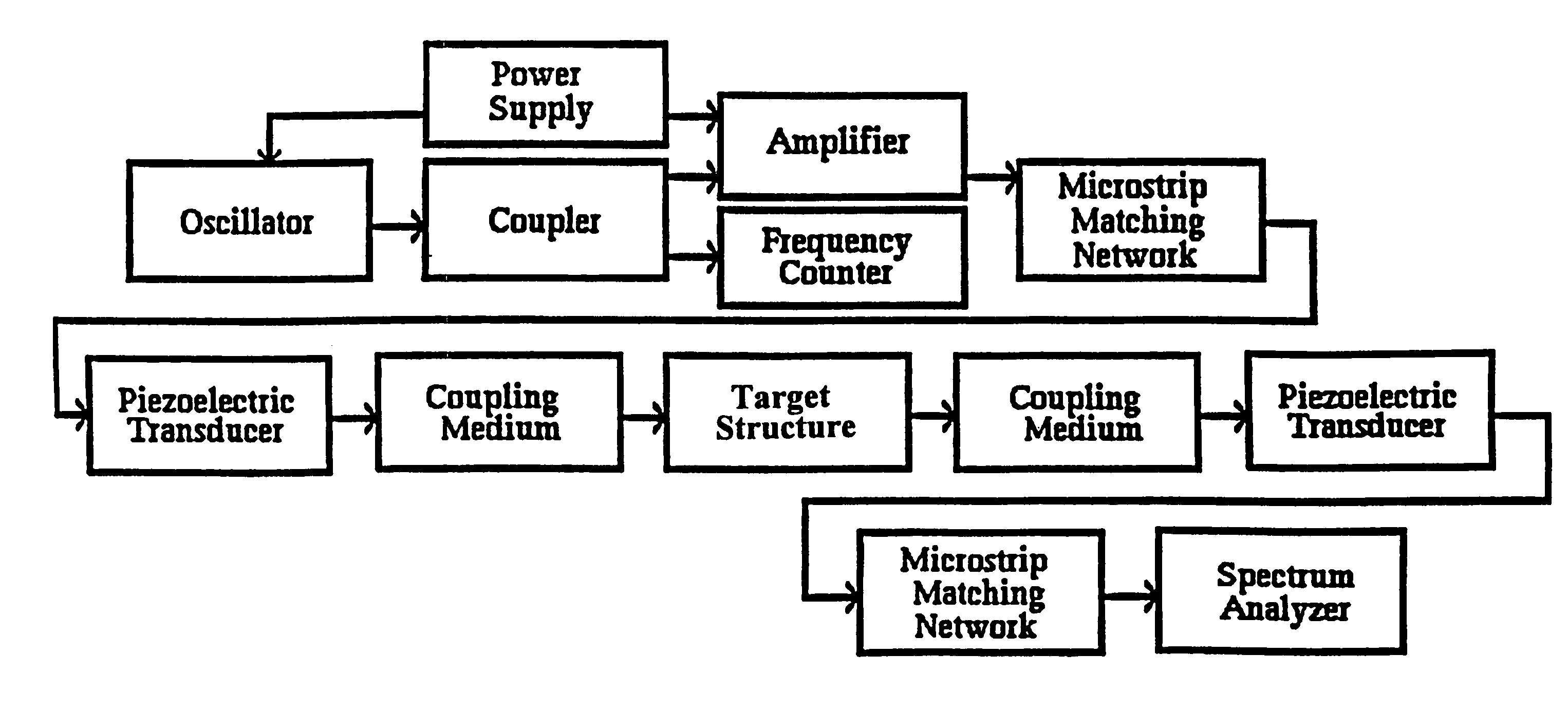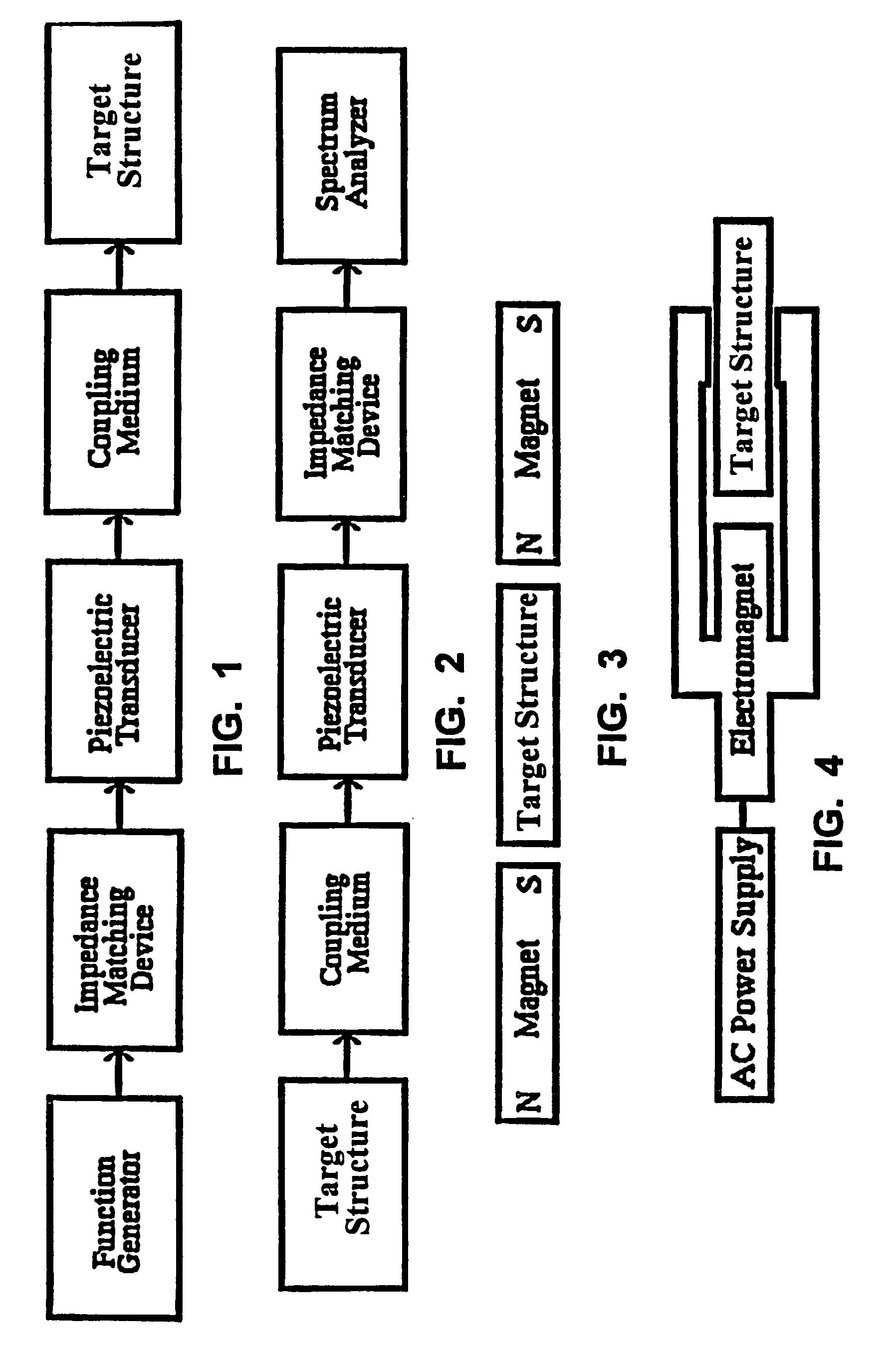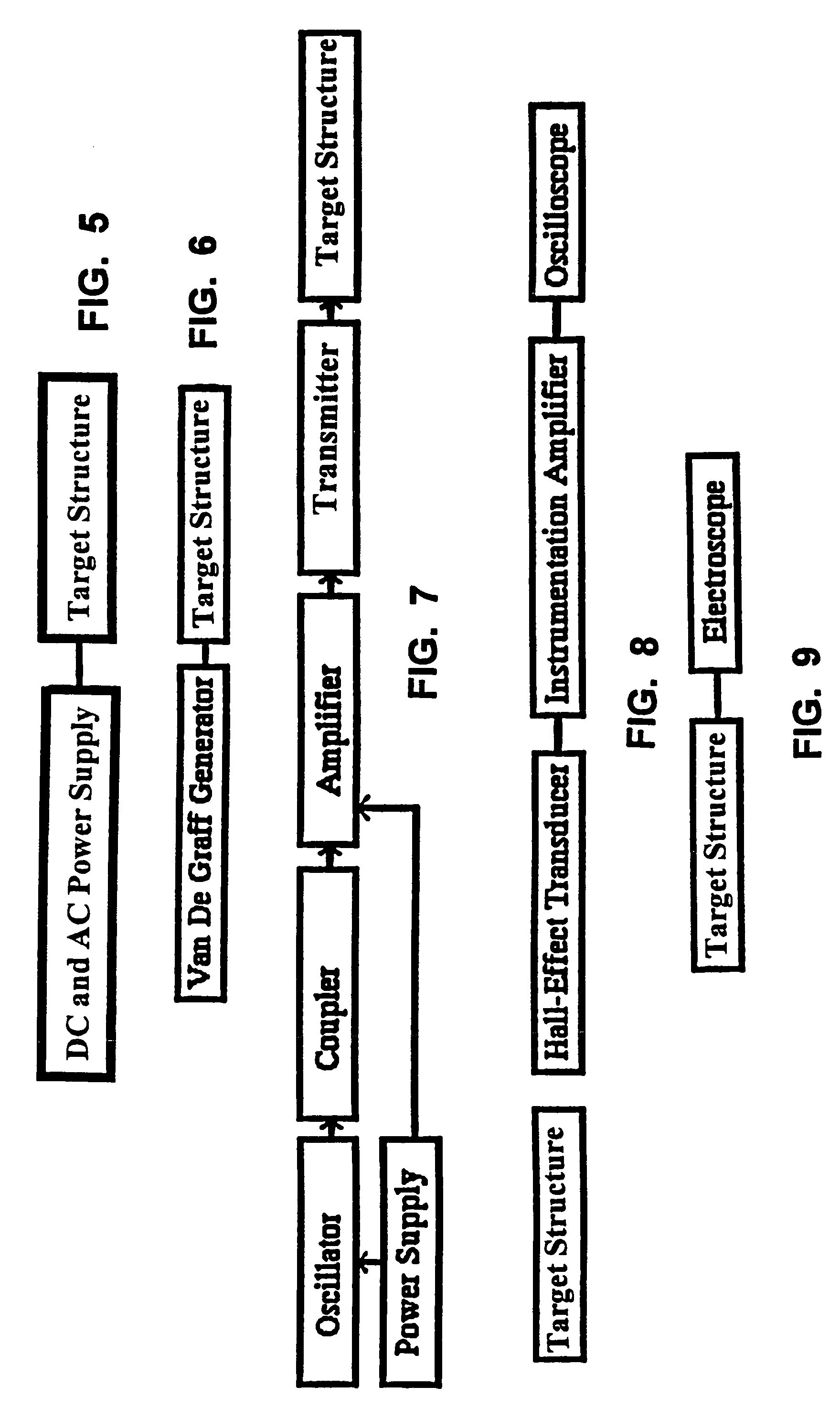Methods for using resonant acoustic and/or resonant acousto-EM energy to detect and/or effect structures
a technology acoustic energy, which is applied in the field of methods for using resonant acoustic and/or resonant em energy to detect and/or effect structures, can solve the problems of not detecting the actual microorganism by the method, and prior art has failed to suggest a satisfactory method or system, etc., to achieve the effect of improving the accuracy of acoustic and em energy
- Summary
- Abstract
- Description
- Claims
- Application Information
AI Technical Summary
Benefits of technology
Problems solved by technology
Method used
Image
Examples
example 1
Disruption. Augmentation, Detection and / or Identification of Viruses
[0154]Since the induction of resonance in a structure can lead to sudden and irreversible structural failure due to rupture of one or more components of that structure, biologic structures can be selectively disrupted using resonant acoustic energy. The present invention takes advantage of the rigid, crystalline structure of viruses for the purposes of detection, augmentation, identification and / or physical disruption of the virion structure using acoustic energy and / or acousto-EM at the resonant frequencies unique to each specific virus. Viruses may be considered piezoelectric crystals, and therefore, can act as living transducers.
[0155]Human illnesses caused by viruses include hepatitis, influenza, chicken pox, mumps, measles, small pox, acquired immune deficiency syndrome (A / DS), ebola, polio, hemorrhagic fever, herpes, and hairy cell leukemia.
[0156]Diseases in animals caused by viruses include but are not limite...
example 2
Disruption, Augmentation, Detection and / or Identification of Micro-organisms
[0224]Any micro-organism, such as bacteria, as well as structure and molecules contained or associated herewith, may be augmented, disrupted, detected and / or identified in vitro or in vivo using the methods of the present invention. Bacteria include, but are not limited to, those associated with animals, man, avians, reptiles, amphibians, insects, aquatic life, plants, fruit, soil, water, oil, fermentation processes for food production, and the like. In one embodiment the bacteria include but are not limited to Streptococcus sps., Staphylococcus sps., Hemophilus sps., Neisseria sps., Treponema sps., Salmonella sps, Shigella sps, Escherichia coli strains, Corynebacteria sps., Bordetella sps., Chlostridrium sps., Rickettsia sps., Chlamydia sps, Brucella sps., Mycobacterium sps., Borrelia sps., Mycoplasma sps., Lactobacillus sps., strains thereof and the like. Human illnesses caused by bacteria include pneumoni...
example 3
Detection and Disruption of Infectious Arthropods
[0239]Arthropods include a diverse group of insects that infest and feed on the blood of humans and animals. Examples include lice, fleas, ticks, mosquitoes, mites, sandflies, and tsetse flies. Aside from the general discomfort and annoyance that these arthropods produce when they infest a human or animal, the true danger of infestation lies in the diseases transmitted by the arthropods. These diseases, in general, cost the world economy billions of dollars a year. The overall health status of the victims is impaired and they suffer loss of time, quality of life, and sometimes life itself
[0240]Mosquitoes transmit dengue fever, yellow fever, encephalitis, hemorrhagic fever, malaria, and lymphatic filariasis. Ticks transmit encephalitis, Lyme disease, relapsing fever, and Rocky Mountain spotted fever. Fleas transmit the plague (Yersinia) and typhus. Lice transmit typhus. Mites transmit rickettsial pox. Flies transmit African sleeping si...
PUM
| Property | Measurement | Unit |
|---|---|---|
| frequencies | aaaaa | aaaaa |
| speed | aaaaa | aaaaa |
| frequencies | aaaaa | aaaaa |
Abstract
Description
Claims
Application Information
 Login to View More
Login to View More - R&D
- Intellectual Property
- Life Sciences
- Materials
- Tech Scout
- Unparalleled Data Quality
- Higher Quality Content
- 60% Fewer Hallucinations
Browse by: Latest US Patents, China's latest patents, Technical Efficacy Thesaurus, Application Domain, Technology Topic, Popular Technical Reports.
© 2025 PatSnap. All rights reserved.Legal|Privacy policy|Modern Slavery Act Transparency Statement|Sitemap|About US| Contact US: help@patsnap.com



